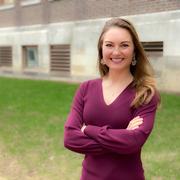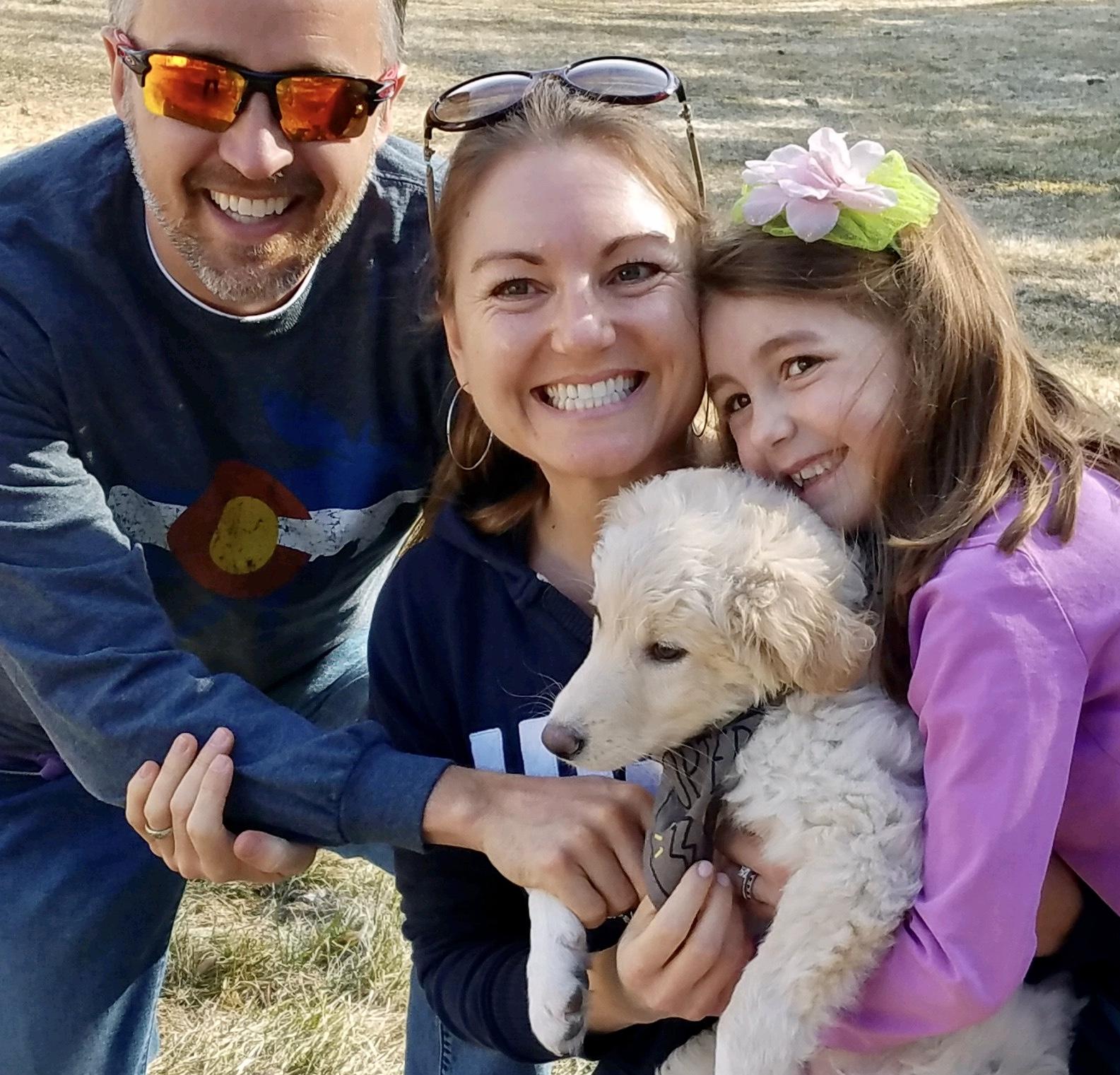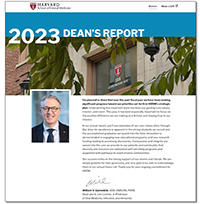
Dr. Brittany Seymour is associate professor and global health discipline director at Harvard School of Dental Medicine (HSDM). With a background in oral and public health, and a concentration in global health and population, she focuses on interdisciplinary approaches for health improvement through prevention, policy, and health promotion. She also conducts research on how misinformation spreads online and impacts important public health programs. She recently shared her thoughts on the spread of the virus as well as the spread of misinformation.
Q: What are your thoughts on the public health response you’ve seen thus far to the threat of coronavirus (COVID19) both locally and nationally? How seriously should the public be taking the measures that have been implemented?
A. I do not think the recommendations for closures and cancellations are at all an overreaction, despite many people still not taking them seriously enough. One of the most important and toughest aspects of public health decision-making, is balancing the risks and benefits while working with high levels of uncertainty. I want to focus on two reasons why I don’t think it’s an overreaction: contact tracing and flattening the curve.
Contact tracing: When people continue to aggregate in public spaces in large numbers (airports, planes, public events and gatherings, crowded bars and restaurants, etc.), it makes important public health prevention and containment efforts VERY difficult. Contact tracing is one of the key measures used to determine how an illness spreads, how quickly, how contagious it is, and how long it hangs around after an infected person has left the area. The fewer people in a location at a given time, whether they are COVID-19 positive or not, the easier it is to follow the spread of the disease by tracing who came into contact with who and when. Decisions to cancel our plans and stay home, may or may not benefit us as individuals directly, but they are choices for the good of our community, our vulnerable neighbors and strangers among us.
Flattening the curve: The curve of the outbreak refers to a graph depicting the early few cases, growing numbers of cases, a peak of the most cases, and then slowing of new cases, until the disease is fully contained. Preventive measures flatten this out, meaning, the peak isn’t as high. Things like social distancing and staying home create fewer new cases, which doesn’t put as great a strain the clinics and hospitals when the numbers peak. This allows the healthcare system to stay staffed, supplied, and functioning throughout an outbreak, and most importantly, continue to manage everyday needs like births, and other non COVID-19 emergencies.
Q: Could you dispel any myths or misinformation you’ve seen circulating online?
A: We studied the media and public response to the 2014 Ebola outbreak and the 2015 Disneyland measles outbreak and found that misinformation significantly interfered with evidence-based action and violated the recommendations of the experts–which of course slowed the containment of the disease. We are seeing the same thing happen again with coronavirus. Some examples are to boil garlic and drink it, or to consume bleach, or that gargling with salt water kills the virus. Some say if you can hold your breath for ten seconds without coughing, you don’t have the virus. None of this is true, these are myths. The truth is there are no exciting miracle cures. The measures that we know to be effective are not sensational or profound, but they work; things like regular hand washing, refraining from touching your face, social distancing and other measures recommended by the Centers for Disease Control and Prevention (CDC).
To limit the spread of misinformation during such a challenging time for us all, I would also suggest that before you share or post anything online, ask yourself three questions: Is it true? Is it necessary? Is it kind?
Q: What is the difference between social distancing and social isolation. What’s recommended?
A: Social distancing, as defined by the CDC, is “avoiding group gatherings and maintaining distance from others (at least 6 feet)." Isolation is when a person is known or presumed to be positive for the illness and therefore must be completely separated from other people. Isolation is lonely, stressful, and can cause anxiety, depression, and even illness, so it’s important to understand when it’s truly needed. Making the right decisions will be important as we head into a new stage of the outbreak in the U.S. Current recommendations for most of us are distancing, not isolation unless we are symptomatic or have been directly exposed. Refer to resources like this chart from Harvard University Health Services to determine if you should practice distancing or isolation.
Q: When will we start to know if public health restrictions such as social distancing are having an impact on the spread of coronavirus (COVID19)?
A: There will be a delay when it comes to seeing how effective closures and social distancing measures have been, so I encourage everyone to continue to practice those measures! We will continue to see a rise in cases as we have not yet reached the peak. People who have the virus may not be showing symptoms yet and are unaware that they have it, and as more testing is done, we will continue to identify positive cases. A rise in positive cases does not mean our efforts are not working. At this time, we are not watching for a decline in the number of cases; we are watching for a peak that is less drastic than predicted. That’s how we will know that our efforts have been effective. We are aiming to flatten the curve, so we won’t necessarily see immediate results. We must be patient and persistent in our efforts.
The important message is to continue to practice social distancing and to not be discouraged when we still see the number of positive cases rise. The peak in cases in the U.S. is still to come and we’re expecting it. Social distancing will help to reduce the number of positive cases.
Q. What can the dental community do to stem the spread of the virus?
A. In addition to the general recommendations everyone is receiving, dental teams are uniquely positioned to support the effort to 'flatten the curve.' Per the recent ADA Statement on COVID-19, dental providers are postponing elective and non-essential care, and focusing on emergency needs only for the next several weeks. The Harvard Dental Center has been providing emergency care only since March 16, this lessens the burden on hospital emergency rooms at this critical time.
I personally want to express my gratitude to all our alumni, colleagues, fellow dentists and dental teams around the world who are working quickly to accommodate those recommendations; thank you for making the tough decisions for your patients and practices. You will save lives.  Q: Do you have any personal advice to share during this time of stress and unease?
Q: Do you have any personal advice to share during this time of stress and unease?
A: If every one of us can reach out to one friend or family member who is not taking this seriously and talk with them, urge them to change their behavior and comply with recommendations to stay home, practice social distancing, and wash their hands, that will help tremendously. I have been calling my family members and that has been effective. They’ve modified their behaviors. The sooner we all work together (it will take all of us!), the sooner we can return to our daily lives.
We also have had regular talks with our daughter, who is in first grade, so she can ask questions and express how she’s feeling. Kids rely on structure and routine and the past few weeks have been anything but structured. It’s ok to loosen the rules for a while, for our families and ourselves. I think flexibility is important, especially because the circumstances continue to change almost daily.
I found this resource helpful for coping with our very human reactions to losing our sense of normalcy, which might include anxiety, overexposure to media, feelings of loss or grief, feeling helpless, and hyper/over vigilance about our health and hygiene. It suggests practical ways we can stay motivated and continue to do our part to keep ourselves and our communities as healthy as possible. These suggestions include keeping connected with one another in a safe way, and doing things that bring you joy like playing a game with your kids or catching up with a friend on FaceTime. Coincidentally, our family recently adopted a puppy, Joey, and he has brought us tremendous joy and comic relief!
This pandemic will change our lives. For most of us, the change will be temporary; but for some of us, our lives will never be the same. We need to be kind and understanding, reserve judgement, and focus on doing our part to help during this challenging time in our world.


